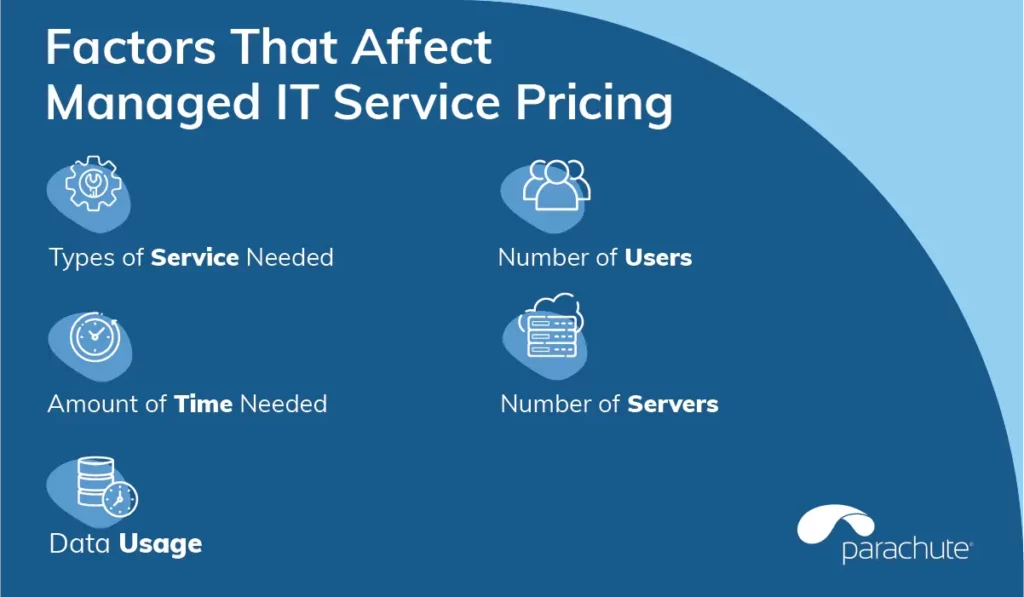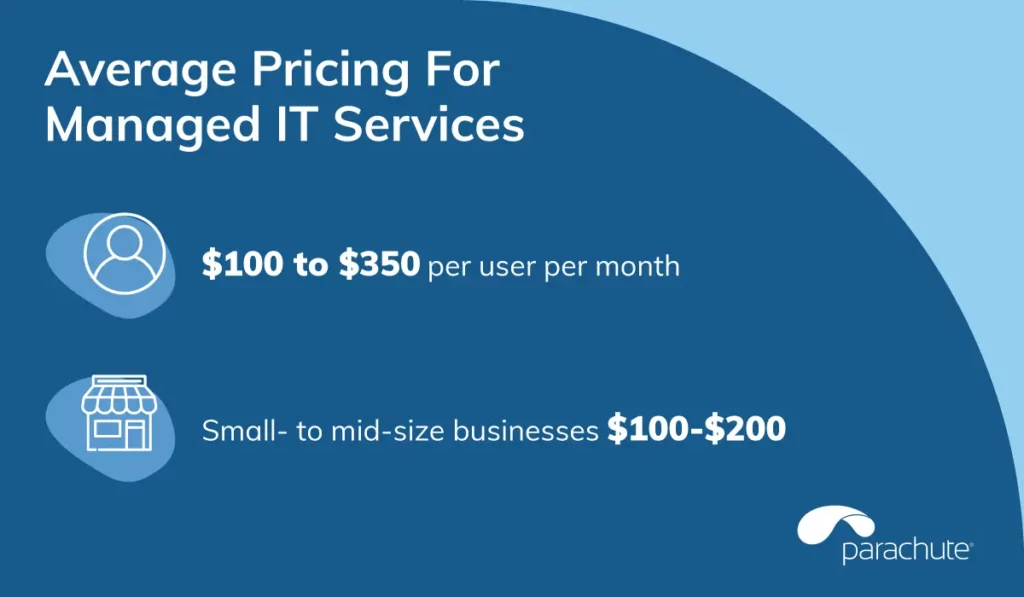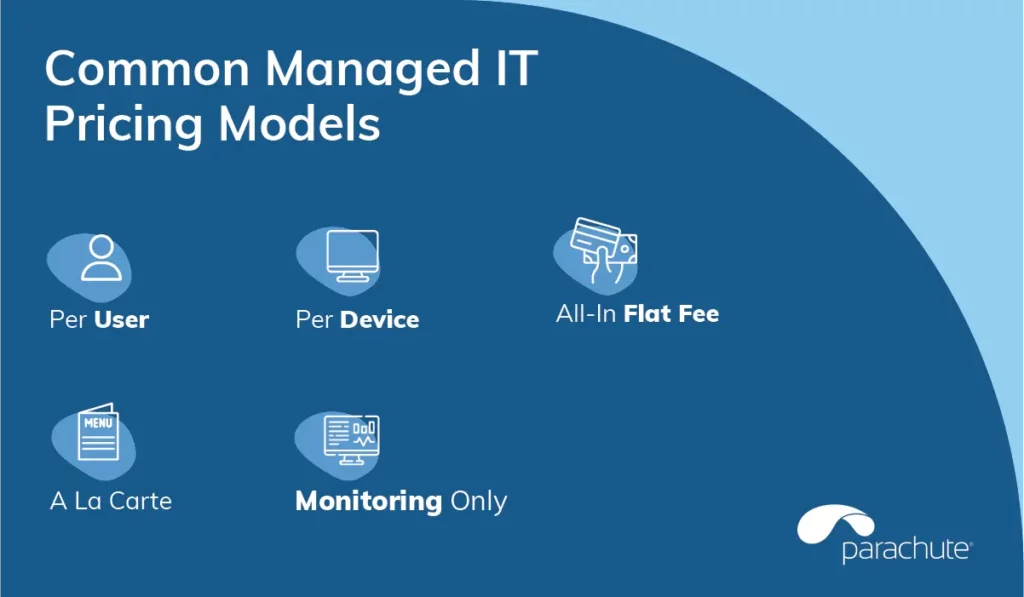Managed Service Provider
The Best Managed IT Service Providers in San Francisco
Rebecca Lamanna

In today’s world of remote and hybrid work, Managed IT Services help keep teams digitally connected and secure. But how much should managed IT cost?
The global Managed IT market is growing at a rapid pace. In fact, it is expected to reach over $354.8 billion by 2026. With Managed IT Services in such high demand, you’re likely wondering what to expect when it comes to pricing.
Unfortunately, there’s no straightforward answer, as the cost for Managed IT Services can vary dramatically between providers. However, there are a variety of factors that can affect the final price of your Managed IT Services, as well as pricing benchmarks to refer to when selecting an IT provider. In this article, we’ll take a look at the market price range for Managed IT Services and the factors that can affect that type of pricing.
Managed Service Providers, or MSPs, offer a wide range of services to help their clients stay on top of IT challenges, keep systems up to date, and keep teams connected. Managed IT Services can be essential for growing businesses that don’t have the resources to run their own IT department. Here are some of the most common services that Managed IT providers offer.
An MSP can help you set up your company’s IT infrastructure in a way that works for both your employees and your clients. This can include remote server configuration or cloud services. Once these systems are optimally configured, an MSP can also provide remote network monitoring to ensure that both hardware and software are working as expected.
IT security services have become particularly important in recent years with instances of hacking and cybercrime on the rise. When employees are working remotely, it becomes even more important to have a secure system. MSPs can configure, monitor, and update digital security systems and implement them on employee devices as needed. Many IT companies also offer firewall monitoring, log management, and other IT security tools and solutions for their clients.
Emergencies can happen even with a reliable security system in place. Because of this, many MSPs offer disaster recovery services for their clients to get their services restored.
Most Managed IT Service Providers offer a helpdesk or service desk to their clients. More operationally mature MSPs will offer a true, 24/7 helpdesk service model so that end-users can receive remote support in the evenings, early mornings, weekends, and even in the middle of the night. A service desk provided by an MSP can also help to supplement an internal helpdesk if one is already in place.
Some Managed Service Providers offer in-person services in addition to remote services. In-person services can be extremely helpful if you need help with installation and device repairs that you cannot do remotely.
There are a variety of factors that MSPs consider to determine the overall cost of your IT services. Here are some of the factors that can affect your IT services pricing.

The exact type of service you need will affect the MSP’s monthly rate. If you already have an in-house team and just need support services here and there, your rate will be much cheaper than a small business that needs to outsource its entire IT department.
The number of end-users will also affect the overall price of your IT service. Many MSPs have a user pricing model where they charge per end-user and/or computer rather than holistically.
Something to consider when seeking out a managed IT provider is the number of devices each end-user has. Many employees use their personal mobile devices (iPhones and iPads, for example) to check company email and access company data. It’s important to take into consideration whether or not those personal devices should have some level of security installed, be monitored, and be supported by the MSP.
Another factor that may affect the cost of your Managed IT Services is the amount of time your IT provider will need to spend on you each month. Some providers may charge an hourly rate for those services, or an approximate or set number of hours may be provided each month for a flat fee.
More operationally mature MSPs will include (unlimited) onsite and Technical Account Management/vCIO/vCTO services, within reason, at no extra charge, because they know those services are necessary to help the client achieve their business goals (and therefore create a long-term partnership with the MSP).
If the IT environment is managed well, it’s a win-win for the MSP and the client, so the MSP should be motivated to provide onsite and technical management/vCIO-level consultation without the “nickel-and-dime” hourly charges that can be perceived as petty by the client.
The number of servers or cloud environments you need to monitor or manage will factor into the cost as well. Maintaining one simple server is going to come at a lower cost than maintaining a network of servers. The complexity of the network will also affect the cost of your service.
The reason for this is that it takes more labor hours to properly manage and monitor these pieces of infrastructure. Also, tools and systems are used (or certainly should be) and there is a direct cost (COGS) that the MSP incurs for each server or each network device.
The amount of data you will be using is another important factor in the price of your IT services. A complex IT environment that uses large amounts of data is tricky to manage, so your MSP will likely charge a higher amount for it.
In general, the more complex your IT system is, the higher your monthly costs will be for Managed IT Services. Your costs may evolve over time as your needs change.
The cost of your Managed IT Services can vary widely depending on your specific circumstances. Even factors like the location of your business can affect the overall cost of your Managed IT Services. However, there are benchmark prices for specific types of Managed IT Services to consider when shopping for a provider.

In general, you can expect to pay anywhere between $100 to $350 per user per month for Managed IT Services. The average pricing for most small- to mid-size businesses is in the $100-$200 range, while larger companies or those with complex IT needs can expect to pay more. You may find an IT services provider that offers pricing under $100 per month, but these providers tend to have very limited service offerings. Rates higher than $200 per user per month are not very common, but they do exist. These higher rates are typically for very complex IT systems that use a wide variety of services or outsource their entire IT department.
There are many different pricing models that MSPs use for their clients. Each of these pricing models has its own advantages and disadvantages. You will need to consider what will work best for your team when shopping for Managed IT Services, as everyone has different requirements. Here are some of the most popular pricing models for Managed IT Services.

Charging per user is one of the most common pricing models for Managed IT Services. This means that the client pays a monthly fee for each person who uses the IT services. However, each user may have multiple devices that are part of this network. For example, they may have a workstation in the office as well as mobile devices.
Many MSPs have a tiered pricing model that charges a lower per-user rate for big companies with over 100 users. Using a tiered model helps keep pricing reasonable for clients as they expand their teams.
Alternatively, some companies opt for a per-device model rather than charging a flat price for each user. This accounts for the extra complexity involved in managing multiple devices. This pricing structure may also be affected by the type of devices you use.
For example, the cost of managing a server is going to be much higher than the cost of managing a single workstation. The rate for managing a server is typically anywhere between $100 and $400 per month, while rates for individual workstations, computers, mobile devices, or firewalls are typically around $100 per device per month.
This pricing model is a good option for businesses that need to outsource all of their IT work. With this structure, you will pay a flat monthly service fee for all remote and on-premise services. This often works better for small companies that don’t have many team members or devices but need 24/7 availability and support.
An a la carte model allows clients to select the specific services they need. The managed services provider then charges a flat monthly rate based on these services. This is typically a good option for companies that have very unique IT needs.
Some MSPs offer monitoring-only services for a relatively low price. This can be a helpful option for companies that need extra support but have budgetary limitations. However, this type of service does not offer flexibility or additional troubleshooting support that you might need.
When looking for a Managed Service Provider, many companies look for the cheapest option rather than the option that provides the best value. In most cases, it is better to invest in more comprehensive Managed IT Services, rather than choosing the provider with the lowest price. Although this costs more upfront, it also ensures that you have the support you need when an emergency arises.
When searching for an MSP, it can be very helpful to compare quotes from multiple providers and consider a variety of price structures to see what makes the most sense for you. In order to provide you with a quote, the Managed Service Provider will need to assess your systems and determine the complexity of your needs.
If so, contact us today by calling 1 (800) 805-0284 to learn more about Parachute’s comprehensive Managed IT Services.